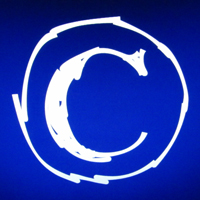- photo contests ▼
- photoshop contests ▼
- Tutorials ▼
- Social ▼Contact options
- Stats ▼Results and stats
- More ▼
- Help ▼Help and rules
- Login
11 - Camera Match - 3DS-Max Tutorial

Photomontage renderings, if done right, can be a lot more appealing and realistic than standard architectural renderings.
The reason why this happens is that a real environment with dust, dirt, scratches and imperfections, by definition looks better than a computer generated one.
Furthermore, creating the entire scene in 3d can prove to be very time consuming, and if you are working in the architectural visualization business you know that deadlines are usually very tight and you can not afford to lose more time working on the environment than on the building.
Having said this, let’s start with the tutorial. Usually photo montages are used for exterior renderings, but in order to keep this tutorial as simple as it can be, I have chosen an interior environment.
submitted: 5 years and 3539 days ago
12 - UVW Mapping with Real World Scale - 3DS-Max Tutorial

UVW mapping a 3d model can be either very easy or very difficult, depending on the complexity of the 3d model and the final purpose of the computer generated image. If you have basic knowledge of texturing you know that if you have a “box like†model you apply a uvw map modifier with a box gizmo, for a bowling ball a spherical gizmo and so on…
But what happens if a client sends you a sample of a wood texture and ask you to apply that on a furniture element? One way to do it is to use tilling, but in order to do it correctly (keep the real dimensions) you need to do quite a few calculations to see how many times that texture should be tiled horizontally and vertically.
Fortunately there is another way to do it by using “real world scale†and that is the process I will try to explain in the following tutorial.
submitted: 5 years and 3539 days ago
13 - How to Create a Furry Carpet with VrayFur - 3DS-Max Tutorial

In this short tutorial we will show you a way of creating a carpet in 3ds max using vray fur. Before we begin, we need to say that you need to use vray fur ONLY when you absolutely need it (when the camera is really close to that specific object that the vray fur is applied to, or if you need to render at a very high resolution); if not using vray displacement is the way to go. If you decide that you need that you need a very high level of detail in your rendering, than be prepared for higher rendering times.
submitted: 5 years and 3539 days ago
14 - Linear Workflow (LWF) the Easy Way - 3DS-Max Tutorial

Even after a few years since linear workflow (also known as gamma 2.2 method) first “appearedâ€, there still is quite a lot of confusion around the subject.
This is caused by the fact that there are several methods to achieve the same result and several tutorials on the internet most of them explaining different workarounds.
In this tutorial we will try to show all the steps that we use for linear workflow (working with 3ds max and vray) and keep things as simple as possible.
submitted: 5 years and 3539 days ago
15 - 4 Tips to Make Your Architectural Renderings Better - 3DS-Max Tutorial

Here is a small list of things that we consider important when doing architectural visualization (or any other subject, as long as it is supposed to be a photorealistic rendering), and from what we see in the image galeries, a lot of people don’t seem to care about.
submitted: 5 years and 3540 days ago
16 - How to Create Frosted Glass Material (part 1) - 3DS-Max Tutorial

In this tutorial we will show you 2 ways of making a frosted glass material in 3d max. The first part of the tutorial is focused on obtaining this type of material directly from the render. Although this part is especially written for 3ds max and vray, the same workflow can be applied to any other rendering software.
submitted: 5 years and 3540 days ago
17 - Frosted Glass Material (part 2) - 3DS-Max Tutorial

This is a follow up of the Frosted glass tutorial (part 1). If you haven’t already read that one, we strongly suggest you do that before going through this one.
If you went through that tutorial, you’ve most probably noticed that the rendering times, when you activate blurred reflections and refractions are considerably high.
However, if you are not rendering an animation and the final product is a still rendering, there is another way around it; this is what we’re trying to explain in this tutorial.
submitted: 5 years and 3540 days ago
18 - How to Add Depth of Field Using a Zdepth Pass - 3DS-Max Tutorial

Depth of field can prove to be a very effective way to add a “special†touch to an architectural rendering, or simply to focus the composition on a specific element.
Technically speaking, there are several possibilities to add dof to an image.
One way to do this is to add it from the vray camera rollout (if you are using vray), but keep in mind that the rendering times can go through the roof, so unless you have a render farm you may not want to consider this option.
submitted: 5 years and 3540 days ago








